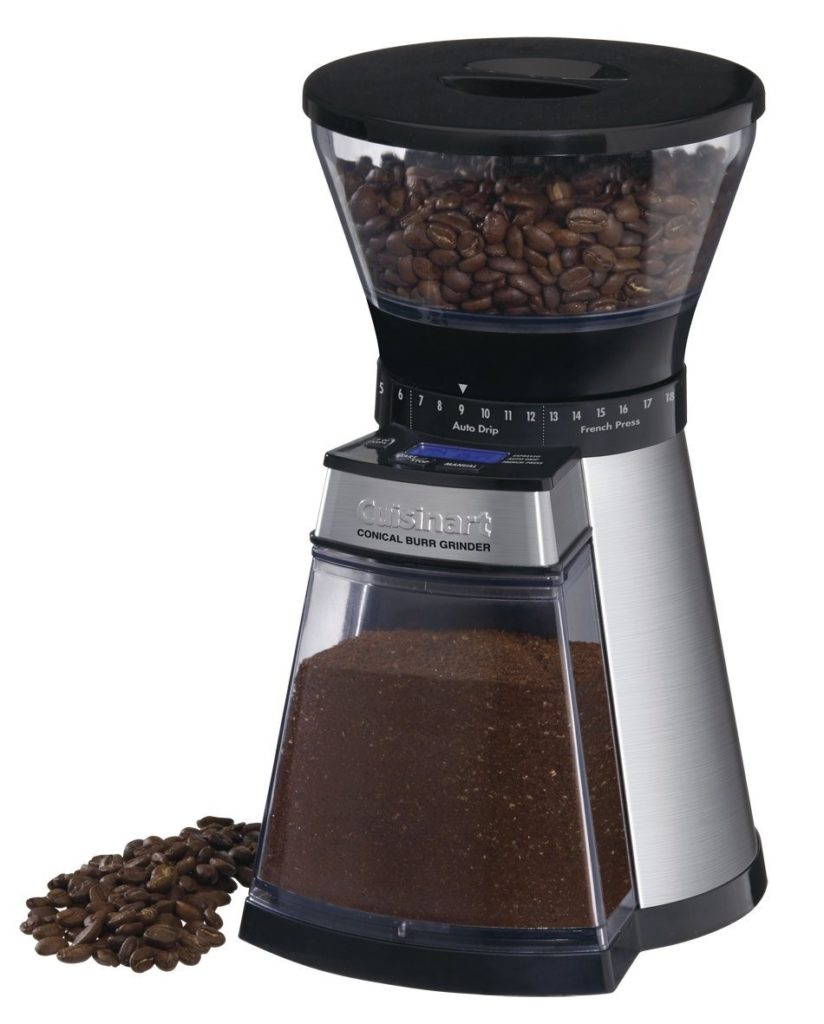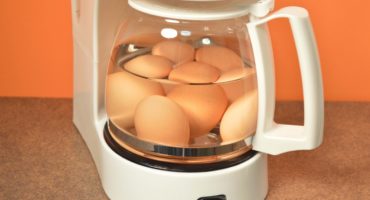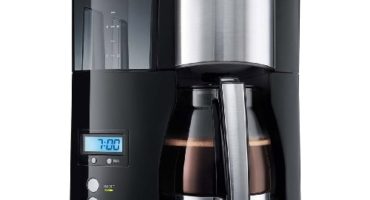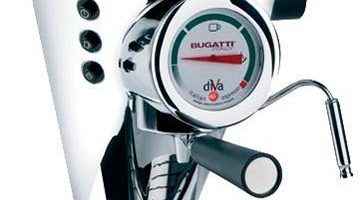Coffee is a favorite drink of many residents of our country and, probably, the entire planet. What morning without aromatic freshly brewed coffee? A hard working day, of course, cannot do without a cup of a strong invigorating drink.
People drink instant coffee in granules, sublimated and powdered. But real coffee lovers know that there is nothing better than a freshly made, only crushed, invigorating drink. You can drink good coffee on the streets in coffee shops or buy a coffee machine in the house. That's just not affordable for everyone, and it takes up decent space in the kitchen. Most lovers of a natural invigorating drink prefer to choose a coffee grinder for the home.
How to choose a good coffee grinder?
To answer this question, you should decide on the method of making coffee. The necessary degree of grinding of grains directly depends on this.
Grinding sizes:
- coarse grinding - granules of crushed grain have a size of about 0.8 mm. The extraction of such a product takes 6 to 8 minutes. Optimal for drip coffee makers;
- medium grinding - granules from 0.3 to 0.7 mm. (similar in size to granulated sugar). The drink is brewed in 4 to 6 minutes. It is considered the optimal size for most methods of brewing;
- fine (fine) grinding - the resulting powder with granules up to 0.25 mm. Suitable for carob coffee makers;
- espresso - It is used only for machines with a built-in espresso mode;
- dust (ultrafine) grinding - can be used for brewing coffee in a Turk.

Coffee Grinding Sizes
When you understand the degree of grinding, you should answer the question: how often and how much is this drink consumed in your family? A morning cup of coffee for one or two people does not require expensive and voluminous appliances. On the contrary, if you have to cook often and for the whole family, it is worth taking a closer look at a more powerful and expensive option.
Types of coffee grinders
According to the source of the applied force, coffee grinders are mechanical and electrical.
Mechanical (manual)
In mechanical models, grinding occurs between two millstones, which are driven by a handle. By scrolling the handle for 15 to 20 minutes, you can grind a portion of real freshly ground coffee. Moreover, the granule size of the outgoing product can be easily adjusted by tightening the screw on the handle.
The mechanical grinding option is suitable for real gourmets of the drink who have free time. Also, a mechanical model can be a real decoration of your kitchen or a great gift.

A mechanical device for grinding coffee beans
Electric
Electric coffee grinders are a modern way of grinding coffee, which saves the user time.
Among the electric models for grinding are:
- rotary (knife);
- millstones.
Knife coffee grinders: advantages and disadvantages
The principle of operation of knife coffee grinders (they are also called rotary) is to break the grains with a sharp, rapidly rotating knife. The knife is driven by an electric motor, which is activated by the "Start" button. In some models, this button replaces the pressure on the top chamber cover.

The mechanism for grinding beans in a rotary coffee grinder
Features:
- it will take only 10 - 15 seconds to grind one or two cups of coffee;
- the speed of rotation of the knife depends on the duration of pressing the "Start" button or pressing the lid. The stronger the applied force, the faster the knife will work. As a result, the grinding of future coffee will be finer. If the knife works too fast, coffee beans may overheat and burn. The brewed drink will be bitter;
- the crushed powder is in the same chamber with less broken coffee grains. It is very difficult to achieve the same grinding of all granules;
- the knife is located in the upper part of the device, where also broken coffee grains are located. If the knife cannot be removed, it is rather difficult and dangerous to clean the tank for subsequent grinding.
Grinding coffee in a knife-type coffee grinder is recommended only in the quantity necessary for a serving. Leaving granules in reserve should not be - they lose their taste and invigorating properties.
The reason for this lies in the oxidation of the powder in air for half an hour. Since it is not possible to completely seal the knife chamber, it is necessary to calculate in advance the required volume of grains for grinding.
The advantages of rotary coffee grinders:
- low price;
- compact sizes;
- mobility - easy to hide in a closet or get it if necessary;
- safety - rotary type models are necessarily equipped with protection against accidental knife activation;
- profitability - the energy consumed by the device is only 150 - 200W / hour.
Disadvantages:
- it is difficult to obtain a homogeneous composition;
- no grain dispenser;
- with a quick rotation of the knife, the resulting product may burn.
Millstone (mill) coffee grinder
Mill type coffee grinders work on the principle of a mill. Instead of a knife for grinding coffee beans, millstones are built into them. By twisting the upper millstone to the bottom, the size of the obtained granules is regulated. The grinding is more uniform.

Millstone scheme in mill type coffee grinders
Features:
- the ability to accurately adjust the degree of grinding;
- portion dosing. In most models of the mill type, a dispenser for 1, 2, 3 cups of coffee is built-in. This is very convenient, because you can immediately pour the entire packet into a bean hopper, and then just turn on the device and receive ground coffee for the specified number of cups;
- the presence of a separate container for grinding. Powdered by millstone powder is immediately poured into another container. In this way, perfect grinding uniformity is achieved;
- more powerful motor compared to knife choppers;
- slow rotation of mechanisms, which prevents the burning of grains;
- double protection. The device starts to work only with properly installed containers for grains and powder.
Benefits:
- ideal grinding size, which is manually adjustable;
- portion dosing;
- separate container for powder;
- longevity of service;
- ease of cleaning;
- safety of use.
Disadvantages:
- the price is an order of magnitude higher than that of rotor mechanisms;
- occupy a certain place in the kitchen.

Mill coffee grinder
When choosing a mill type coffee grinder, you should pay attention to the alloy from which the millstones are made. Steel gears wear out quickly. Titanium - last longer, but also cost more.
It is not recommended to grind any excellent products in any type of coffee grinder. Nuts, cereals, sugar, pepper, herbs - leave odors that can ruin the taste of an invigorating drink.
The best knife and mill type coffee grinders
Trying to get rid of the shortcomings of knife-type models, coffee grinder manufacturers came up with additional improvements that significantly improved the quality of the devices.
In a quality rotary coffee grinder must be present:
- inclined chamber for more uniform grinding of grains;
- not too powerful motor (about 150 - 200W) to prevent burning and the appearance of bitterness;
- shutdown when overheating;
- removable knives to facilitate cleaning;
- rotation speed of at least 500 rpm;
- metal case, parts made of durable plastic;
- power on lock in case of improper assembly;
- pulse mode - improves the quality of grinding;
- soft suction cups for firm fixation on the surface;
- cord reeling device. It is very convenient if you have to clean the device all the time in a cupboard.
Some manufacturers produce devices with two knives, which contributes to a more thorough grinding.
Good mill coffee grinders should have:
- millstones from titanium or good steel;
- metal case;
- tight chambers for grains and ground powder. Cone chambers for grains contribute to a more uniform grinding. Cylindrical - sometimes you have to shake it, because powder adheres to their walls;
- rubber overlay for fixing to the table;
- double protection against inclusion in the wrong position of the cameras;
- powerful motor up to 300W.
Overview of knife and mill coffee grinders
Among the best knife coffee grinders with good user reviews are: Bosch MKM 6000/6003, Caso Coffee Flavor, Mikma EKMU IP-30, UNIT UGG-112, VITEK VT-1542, Polaris PCG 0815A.
Bosch MKM 6000/6003

Bosch MKM 6000/6003
Rotary electric coffee grinder made of durable plastic. Has an inclined bowl. Stainless steel knives, safe mode. The capacity of the grinding container is 75 grams.
The small size, optimal price, grinding quality and durability of the service served as a huge number of reviews of satisfied users.
VITEK VT-1542

VITEK VT-1542
Features:
- metal case;
- automatic shutdown when overheating;
- ergonomic design;
- low price.
Users complain about not perfect grinding, strong heating of the case and a short electric cord. But, these minor flaws are completely overlapped by the longevity of work and the cheap price of the goods.
Cunill Brasil, Rommelsbacher EKM 300, Delonghi KG 79, Nivona NIGS 130 Café Grano, and others showed good quality, durability, grinding accuracy, and the preservation of aromas of freshly ground coffee.
Delonghi KG 79

Delonghi KG 79
Millstone coffee grinder for home use. It has a practical appearance, easy to clean outside and inside.
Features:
- grinding degree adjustment;
- possible loading up to 120 grams of grains;
- compactness;
- strong case;
- rubberized legs;
- coffee grinder power 110W.
Among the shortcomings emit dust on the walls of the tank, which has to be cleaned.
Rommelsbacher EKM 300
Mill type coffee grinder.
Features:
- power 150W;
- large capacity for grains of 220 grams;
- practical appearance;
- 12 degrees of grinding;
- device for wrapping the cord.
Model Rommelsbacher EKM 300 is characterized by the strength of parts, low power consumption and noise level.
Users note some inconvenience when cleaning millstones. For all other characteristics, the coffee grinder received the highest marks.

Rommelsbacher EKM 300
How to use a coffee grinder?
Many lovers of an invigorating drink have already purchased devices for grinding coffee beans, but still do not know how to use them correctly. Setting up a home coffee grinder is a very important step in obtaining a delicate aroma of a freshly invigorating refreshing drink.
Instructions for grinding grains:
- Check the cleanliness of the containers for grinding and storing the powder after previous use. The cameras must be clean and always dry.
- Determine the number of grains needed or fill the entire pack (for mill coffee grinders). About 7 grams of grains are used per cup. You should not grind a lot of coffee. Even in the most airtight containers, powdered powder quickly loses its aroma and invigorating properties.
- Turn on the appliance.
- The grinding time in rotary coffee grinders is about 10 seconds. - coarse grinding; 13 sec - average; 15 - 20 seconds fine grinding and dust.
- Pour freshly ground powder from a container into a cup.
- Brew aromatic coffee.
- Clean the empty powder chamber with a dry cloth. Let it ventilate in the air to escape previous odors.

The rate of ground powder for one cup of coffee
Tips for making delicious coffee:
- When using knife devices, a more uniform grinding and protection against overheating is obtained by pulsed pressing the button 2 to 4 times during the grinding time.
- If the coffee is bitter, reduce the grinding speed.
- If the drink turns out to be sour, increase the size of the granules of the powder.
- Good taste comes from mixing different varieties of arabica and robusta.
- Green grains give some sourness, but have a more invigorating aroma.



